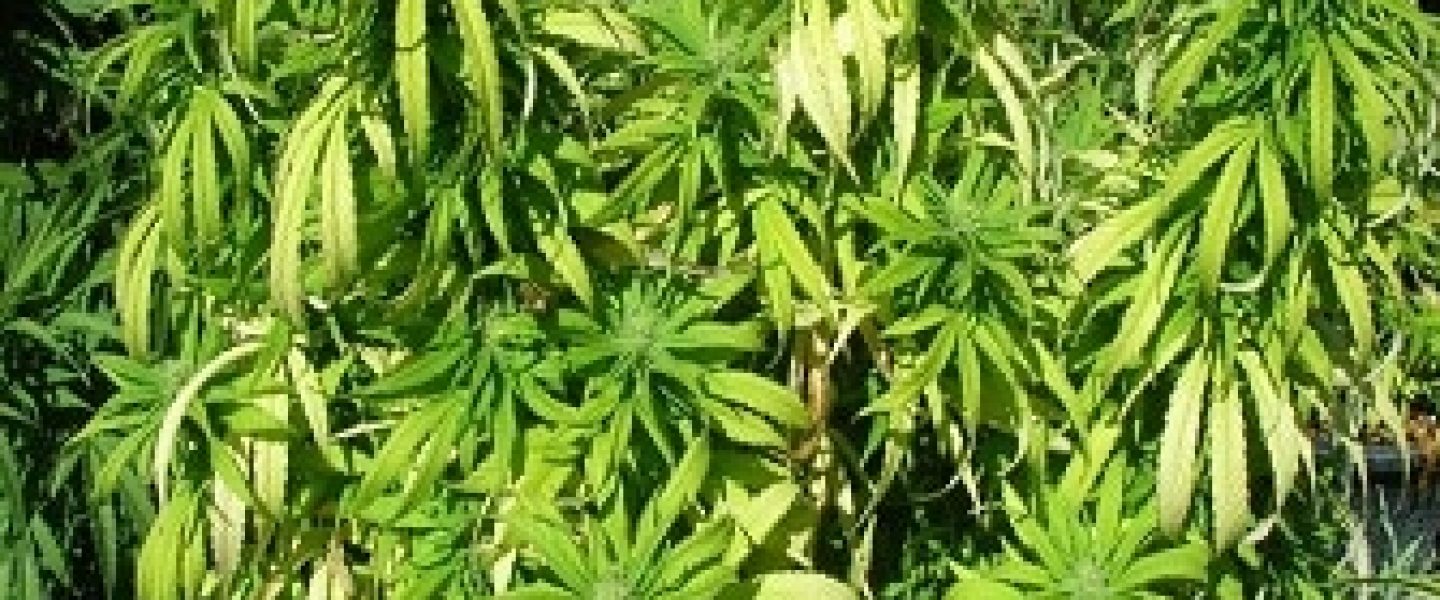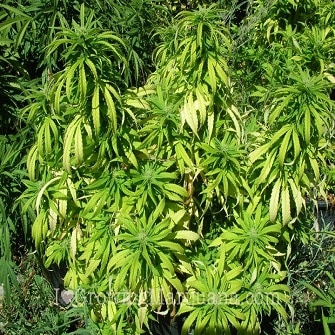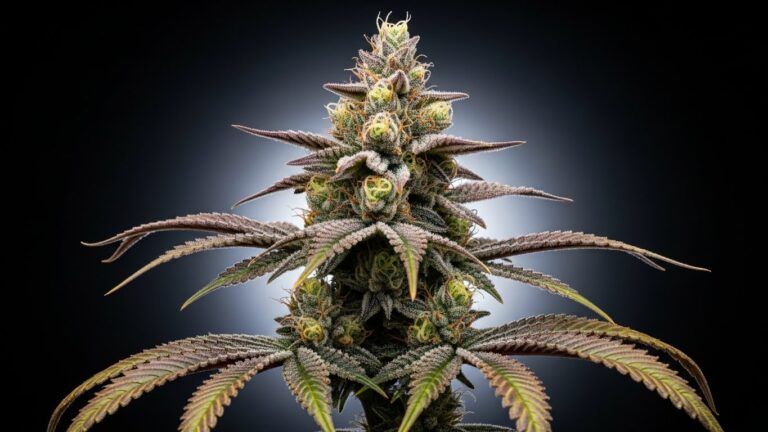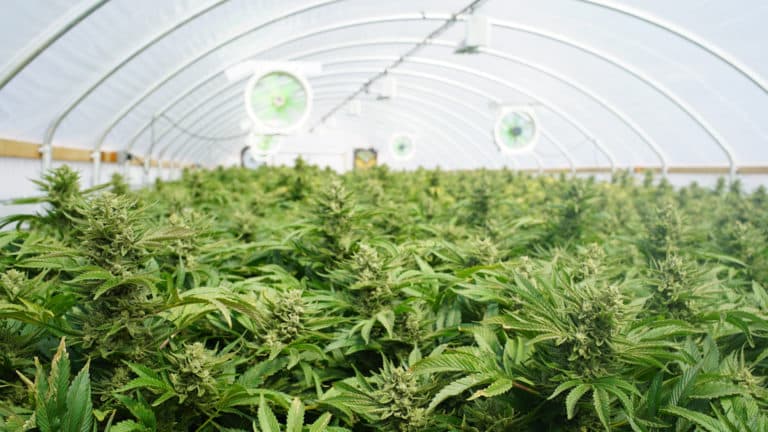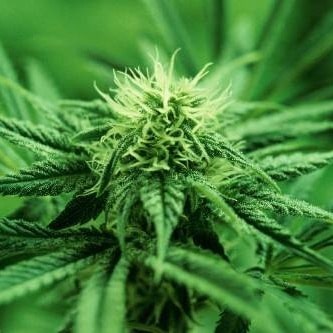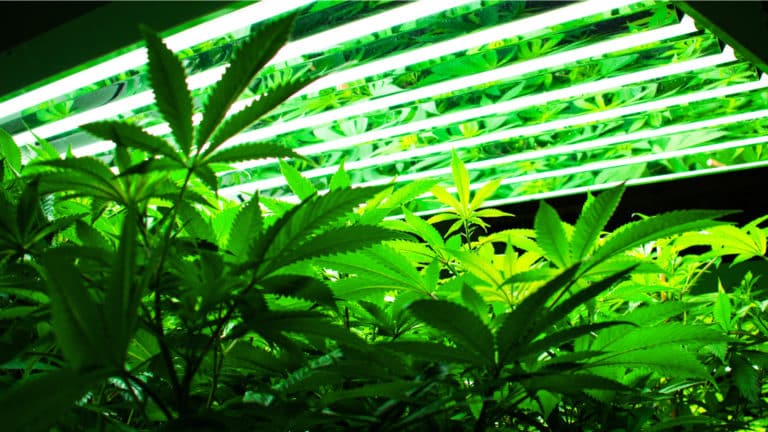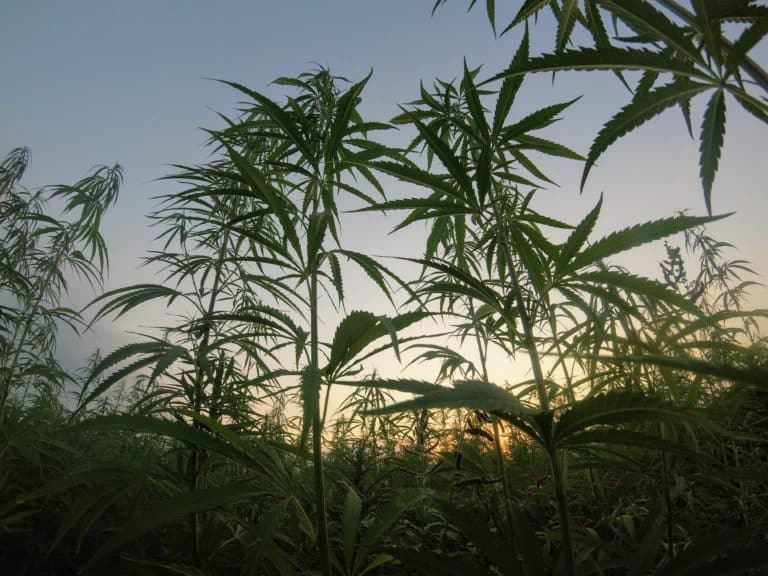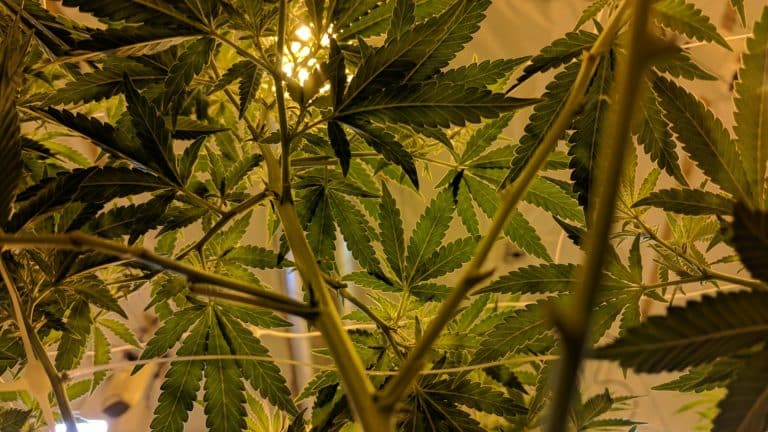1 – Alfalfa and Cottonseed Meal
To correct nitrogen deficiencies in your marijuana garden, adding granulated products made from alfalfa and/or cottonseed to the soil provides protein which counteracts the deficiency. Pressed alfalfa hay and the remaining solids after cotton seeds have been pressed for oil act as slow-release nitrogen fertilizers when combined with the soil. Alfalfa meal or pellets are used as animal feed and is also used as a fertilizer to increase organic matter in the soil. Alfalfa contains trianconatol, which is a fatty acid stimulating growth. Cottonseed meal is high in nitrogen. However, due to the use of pesticides in cotton fields, it is imperative you use pesticide free products on your cannabis.
2 – Cal-Mag (Calcium – Magnesium)
As the name suggests, Cal-Mag contains calcium and magnesium, along with nitrogen, phosphorus and potassium, so be careful when considering this control method. Do not use Cal-Mag during the flowering stage or the flowers will receive too much nitrogen. This treatment should be applied during the vegetative stage. Cannabis roots absorb calcium and magnesium in a proper pH level (6.5). If the pH is off, calcium deficiency can result in the forming of dead spots in the leaves, then crinkling or spotting. Follow instructions and don’t over-apply or you can end up raising the essential nutrient levels too high.
3 – Calcium Nitrate
This is another option for correcting calcium deficiency. It can be found at larger garden centers as a fertilizer or through scientific supply houses. Calcium nitrate contains fifteen percent nitrogen and can raise the soil pH level if needed. Again, use caution using any calcium correcting control during the flowering stage of your marijuana plant, so as to avoid providing more nitrogen than is needed.
Download my free marijuana grow bible for more tips about nutrients and marijuana plants.
4 – Chelated Minerals
Chelated minerals are those that have been bonded together by organic compounds and are necessary to a marijuana plant’s ability to transport oxygen and nutrients. Because minerals are inorganic, the chelating process facilitates absorption by plant life. They can be used to correct certain mineral deficiencies, while correcting imbalanced pH levels. The most common usage is liquid fertilizers targeting copper, iron, manganese and zinc deficiencies. Many hydroponic formulas contain a blend of chelated minerals. Single metal chelates are also available to address specific deficiencies in the marijuana garden.
5 – Compost Tea
In the beginning of this section we mentioned the importance of amending soil with compost as a preventative measure in preparing the soil for your outdoor marijuana garden. Compost is a rich source of beneficial microbes and micronutrients providing a strong immune system for your cannabis crop. Nutritious soil not only provides a healthy foundation for growth, but supplies many insecticidal and anti-fungal properties, diminishing the possibility of blight thwarting your efforts. We will discuss compost in depth towards the end of this segment.
Obviously, compost cannot be added to a hydroponic system, but the benefits of compost can still be obtained in the hydroponic environment in the form of compost tea. However, special care must be taken when so doing. Compost tea should be used as a foliar spray and should only be added directly in drip to drain systems.
Although compost tea can be applied at soil level in addition to its use as a foliar spray, we hope you are a conscientious gardener and have amended your in-ground or container grown plants with compost. As such, this particular discussion is geared towards the hydroponic gardener.
Compost tea is available for purchase through most hydroponic shops. They will either prepare the tea and sell it fresh, or offer kits to enable you to make your own. Or, if you have a green (brown, in this case!) thumb, we will offer a condensed version to creating this nutrient packed food source for your soil-less cannabis garden. The kits available at your local hydroponic center will come with instructions, so there is no need for this article to duplicate the information provided on the packaging. The following recipe is meant for use as a spray.
To make compost tea, assemble the following:
• 1 one gallon bucket w/handle
• Aquarium air pump with hose and bubbler attached
• 1 nylon stocking
• Organic, sterilized compost (buy at your local garden center if you don’t have a cured compost pile)
Fill the stocking with the equivalent of one quarter the bucket’s capacity. Tie the end of the stocking onto the handle and flip the loaded stocking into the bucket. Fill the bucket with water then place the air hose and bubbler in the bottom. Run the bubbler for a day in order to aerate the solution. When this step is complete, turn of the pump and let the tea settle. The liquid should be dark brown with no unpleasant odor. If the mixture has an ammonia scent or smells rotten, it cannot be used as a spray. Strain the mixture through cheesecloth and add to a spray bottle or add it to the irrigation water. The spray should be applied within hours of aeration or it will lose oxygen, at which point you’ll be defeating the purpose; oxygen is the conductor enabling plants to receive nutrition.
Spread the unused compost on the soil around your marijuana plants (any plants, not just cannabis) and work into the soil or allow it to dry in the sun and return to the compost pile for future use.
6 – Fish Emulsion and Fish Meal
Fish meal, which is the ground up inedible parts of fish into a powdery substance, and fish emulsion, which is the liquid remnant of fish after having been pressed for oil are effective additives available to the marijuana gardener as a correcting measure for nitrogen deficiency. The bonus with fish based treatments is the additional micronutrients they contain which aids in preventing additional nutritional inadequacies.
Both amenities are soil enhancements. Fish emulsion releases nitrogen to your cannabis quickly, while fish meal provides a slower, steady release. Consult your local garden center (discreetly) to see which option better serves your needs, based on symptoms.
7 – Granite Dust
Granite dust is a slow-release source of potassium and may contain other micronutrients that stabilize the alkaline levels in the soil. For it to be most effective, it is recommended to mix granite dust (rock dust) with a fifty percent mixture of compost. Till into the soil when preparing your cannabis bed. When added to the soil, rock dust stimulates the growth of organic matter which feeds the beneficial microorganisms. An added benefit to incorporating rock dust in your plant bed is it results in holding the soil in place and conserving water. Rock dust carries the benefit of revitalizing the soil with minerals.
8 -Greensand
Greensand is the result of crumbling sandstone, a soft rock form rich in potassium and iron. It derives its name from the color and is not ‘sand’ per se. Greensand forms in marine environments and are typically rich in clay minerals and marine fossils. This is a slow-release application benefiting cannabis in the flowering stage. It is most beneficial when mixed with compost. (Are you beginning to see a pattern here?)
9 – Guano
Guano is an effective fertilizer consisting of the feces and urine of seabirds or cave-dwelling bats. It is high in nitrogen, phosphorus and earth salts. Bird guano has a higher fertilizer value than bat guano. Be sure to read labels for the concentration of nutrients you need to correct a particular deficiency.
Guano has a much less pungent odor than animal manure, which makes it an attractive additive in correcting nutritional deficiencies in the soil. It can also be used as a compost activator. Guano can be applied as a foliar spray or soil drench by mixing one quarter cup guano per one gallon of water. Liquefying the manure allows the nutrients to be more readily absorbed by your marijuana plants. The product is available at garden centers or online.
10 – Gypsum
Gypsum is hydrated calcium sulfate, a naturally occurring mineral in most of the United States. It is used in agriculture to correct the sodium levels in soil. Gypsum, when added to the soil is a ready-made source of calcium and sulfur and reduces the aluminum toxicity, along with ammonia which may be present due to the application of certain fertilizers. Additionally, if your cannabis grow site has experienced soil crusting, adding gypsum to the surface will break it up, allowing the emergence of tender seedlings. If your crop is in an area with clay soil, applying gypsum before planting has been known to prevent crusting.
Download my free marijuana grow bible for more tips about nutrients and marijuana plants.
11 – Hydroponic Micronutrient Products
These are available at any hydroponic supply house. Micronutrient products will correct deficiencies in copper, iron and various other micronutrients. Be aware that many products also contain levels of the necessary macronutrients, nitrogen, phosphorus and potassium. Read all labels to ensure proper balance of each nutrient when applying to your hydroponic marijuana garden.
12 – Iron Supplements
See Chelated Minerals for more on this topic. Iron deficiency appears as a yellowing of the cannabis leaves, although the veins remain green. If your pH levels are correct, iron deficiencies are uncommon. When the need arises to apply an iron supplement, it is advisable to withhold using a fertilizer as they can counteract each other. Read the labels of both products before combining.
13 – Kelp Concentrates
Kelp, otherwise known as seaweed, is useful in treating potassium and copper deficiencies. It is available in granular or liquid form. Kelp contains more than seventy vitamins, minerals and enzymes providing a wealth of health to the soil. Adding kelp to the compost pile aids in the decomposition process. An added benefit is the deterrence of (unwanted) weeds in the marijuana bed. Kelp has been used for centuries as a soil amendment for all types of gardens. When using the liquid form, it is best to apply in early morning or early evening and to avoid application when the temperature exceeds eighty five degrees.
14 – Lime
Lime is a readily available (in store or online) compound used to adjust soil pH levels upward or to correct calcium and manganese deficiencies, due to its high alkaline properties. You should avoid fertilizing and liming simultaneously, as they will cancel each other out and cause an unfavorable reaction in the soil. Made from pulverized limestone or chalk, lime comes in several variations; choose the form that most suits the needs of your marijuana garden:
• Hydrated lime (slaked lime). Very small amounts are needed to correct the pH level of your soil, as it is the highest alkaline form suitable for gardening. The chemical name is calcium hydroxide – Ca(OH)2.
• Garden lime is crushed limestone or oyster shells. The main component is calcium carbonate – CaCO3, which is also found in eggshells. This may be why eggshells are recommended as a component when making homemade compost. It will raise the soil pH levels and is less alkaline, thus safer to use than hydrated lime.
• Dolomite lime is high in magnesium. Dolomite has a neutral pH level of 7.0, which when mixed with the soil, creates the optimum pH levels for cannabis growth. Dolomite lime is available at local garden centers.
• Liquid lime blends with the soil quicker than the powders. Both garden lime and dolomite are available in liquid form.
15 – Magnesium Sulfate
Otherwise known as Epsom salts, magnesium sulfate can quickly correct magnesium and sulfur deficits. In hydroponic gardens, add a solution of one teaspoon Epsom salts per gallon of water to the reservoir or use as a foliar spray. This recipe can be applied to outdoor cannabis gardens, as well. Epsom salt granules can also be mixed in with the soil when preparing the garden for planting. Magnesium is critical for seed germination and the production of chlorophyll in marijuana plants. It strengthens cell walls, which is one reason the use of Epsom salts (discovered in Epsom, England) is such a popular fertilizer for the organic gardener.
16 – Marijuana Booster
Dutch Nutrients has developed the perfect nutrient mixture to grow the biggest marijuana buds and produce ample THC! All professional breeders in Amsterdam have started using this product. Right now we are making it available to you! Check www.MarijuanaBooster.com for more information.
17 – Mycorrhizae
This strange word means ‘fungus roots’. So why are we including this in the controls section? Mycorrhizae are an important component of soil life in the relationship they build with plant roots. Essentially, Mycorrhizae fungi extract nutrients from microbes growing along the root surfaces and transport them to the roots. Mycorrhizae actually become an extension of the root system, working deep within the soil to provide nutrients and water to the roots, resulting in healthier marijuana plants. Mycorrhizae inoculants are available online.
18 – Nitrate Salts
Inorganic nitrate salts are water soluble, which allows for quicker penetration. Nitrates used in agricultural fertilizers are ammonium, sodium, potassium and calcium. They can be purchased as a mixture, or with greater concentration of the specific deficiency requiring attention.
19 – Rock Phosphate
Rock phosphate is a naturally mined mineral often used as a soil amendment. It offers a slow release of phosphate, which is the second most abundant macronutrient essential to well-balanced soil in your cannabis garden. Check your pH levels before applying rock phosphate. It is usually only necessary as a soil amendment in pH levels above 7.0, which is optimal for Mary Jane’s garden to thrive.
20 – Urea
Urea, made from urine, as the name suggests is high in nitrogen and may be used to correct nitrogen deficiencies. However, once urea mixes with the soil, it undergoes an intensive chemical change releasing ammonia into the soil. This can burn seeds and seedlings. Follow label directions and do not apply in extreme heat.
21 – Zinc Salts
Zinc is an enzyme aiding in the formation of chlorophyll. Zinc deficiency often is the result of the soil pH being too high. Too little zinc in cannabis will make itself known by producing smaller leaves than normal. Conversely, too much zinc is toxic and will kill the marijuana plant rapidly. Correcting the pH level of the soil often solves the problem. Foliar treatments are available if necessary.
If you want to start growing, download my free grow guide and order some marijuana seeds. All top quality marijuana seeds are available in my marijuana seed shop (buy 5 get 5 free). We ship seeds to the US, CA and many other countries. For any growing related question please visit the marijuana support page.
Source: ILoveGrowingMarijuana.Com


